Home \ Project News \ Finding Carbon Footprint of Damoyu Village
Author: Le Hongyu, team promoter of low-carbon schools project
Damoyu Village is part of Yuhua Village, Tuanjie Town, Xishan District, Kunming City, Yunnan Province. There is a bridge waterside as well as cultural atmosphere in the village, especially the village school with full and varied sand piles, climbing walls, albums, and books.
The charm of Damoyu Village lies in the mutual integration of locals and newcomers, who jointly explore and build a sustainable urban and rural community of "taking care of the earth and humans". From ecological paver on the walls to homemade enzymes, toilet compost, garbage sorting and solar lights, the Damoyu Village applies sustainable development in every aspect.
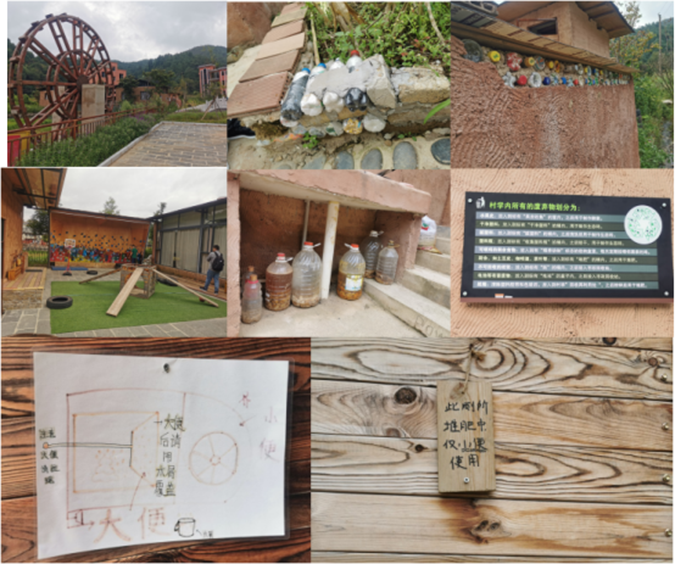
In order to learn about charm of Damoyu Village, last month the low-carbon schools project team went to the village to experience the sustainable lifestyle of the villagers through exchange and practice.
Under the guidance of the local teachers, we visited the Yinguang courtyard,which is committed to community supported agriculture and sharing healthy and ecological agricultural products with the public through a WeChat platform. As one of the earliest vegetarian sharing platforms, the WeChat platform built by it shares not only vegetarian information in Yunnan Province, but also the content of local ecological ingredients.
Vegetarianism is one of the simplest low-carbon lifestyles.
"The most effective way to reduce the ecological stress on the earth and all species in terms of personal lifestyle should be to emphasize a more vegetarian diet," said James Hanson, an American meteorologist known as the "father of global warming research."
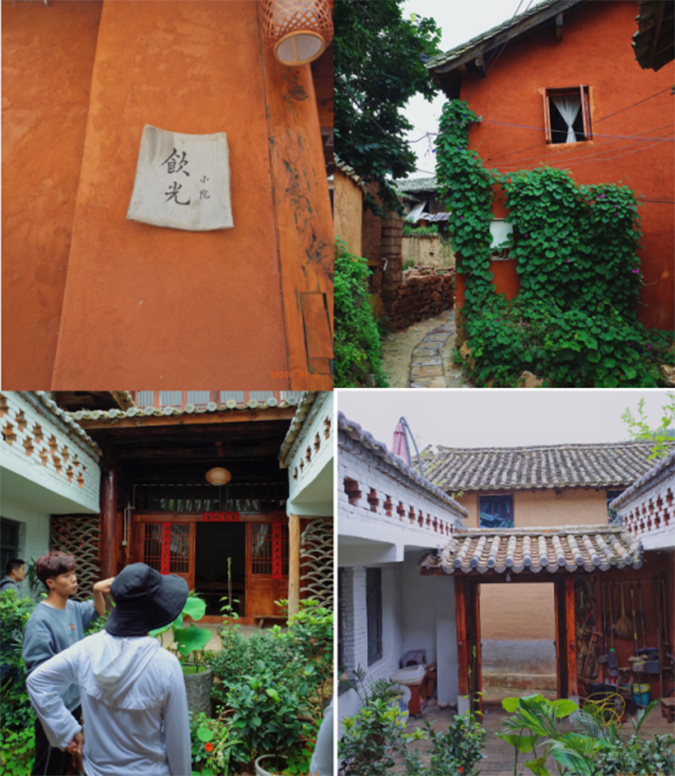
In order to enhance our understanding of climate change, we invited villagers and visitors to participate in lectures on climate warming in the school.
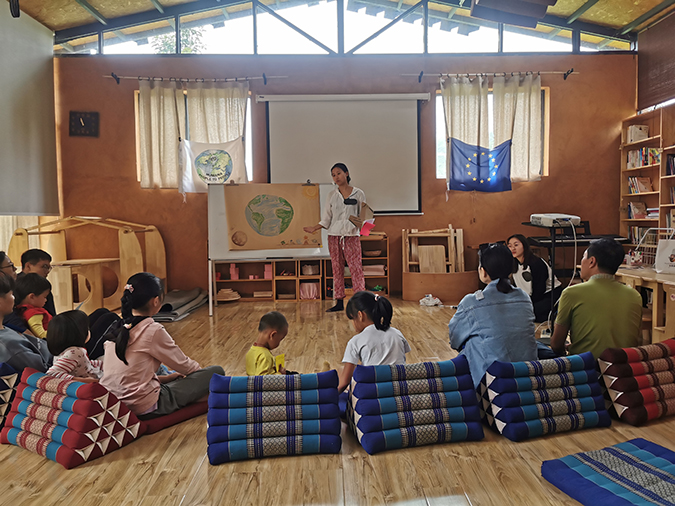
What's my favorite? What's my name? What's the weather like today? We gradually guided children to think and explored the formation of "weather, earth, milk, and clothes" in their daily life through asking questions which was the way they were most interested in, and finally let them realize vividly that greenhouse gas emissions could be seen everywhere, and we were putting a lot of "coats" on the earth in our daily life.
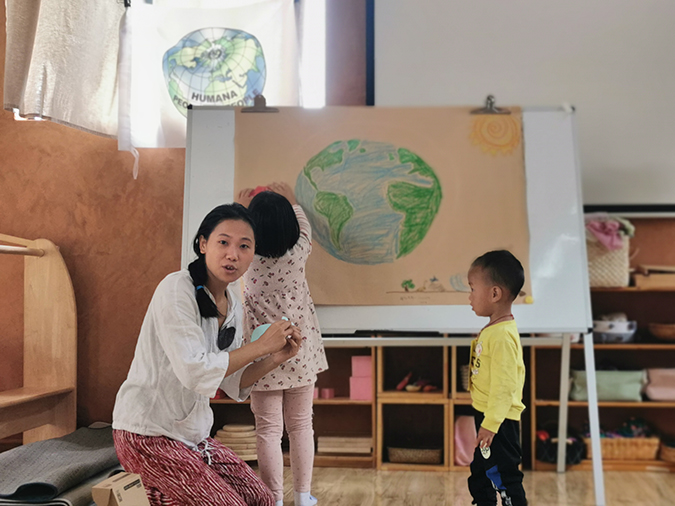

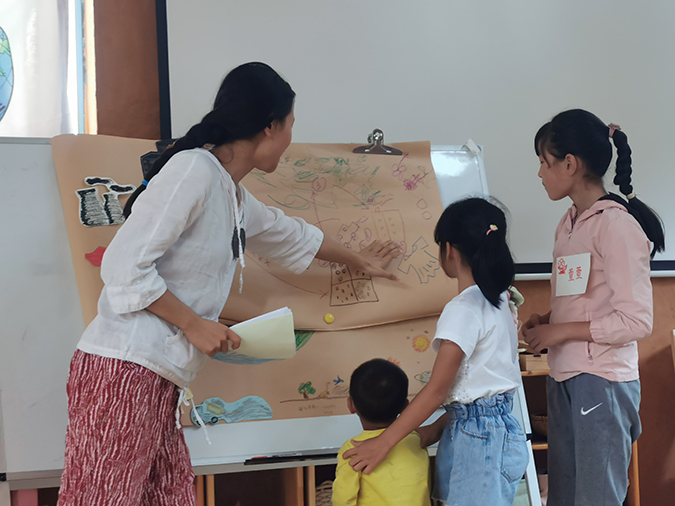
The earth with many "coats" was getting hotter and hotter, so how can we reduce greenhouse gas emissions? The children racked their brains to find the answer.
After a while, everyone clamored to help the earth take off its "coat".
To further children’s understand how to take off the earth's "coat" through their daily routine, we taught them to make reusable bags by old T-shirts and sort out the garbage.
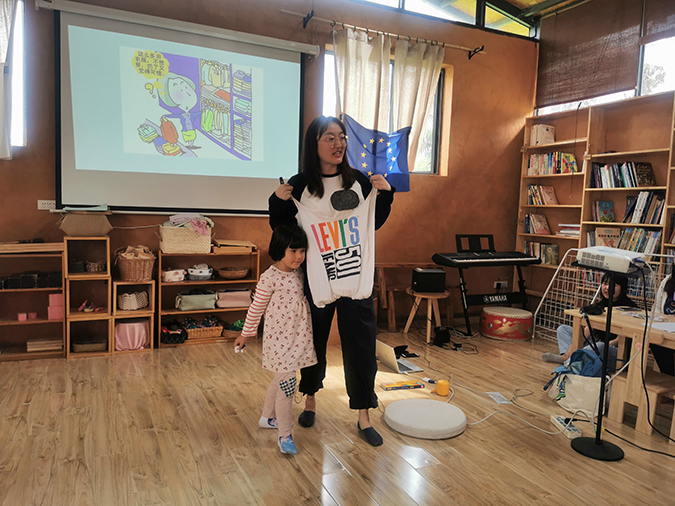
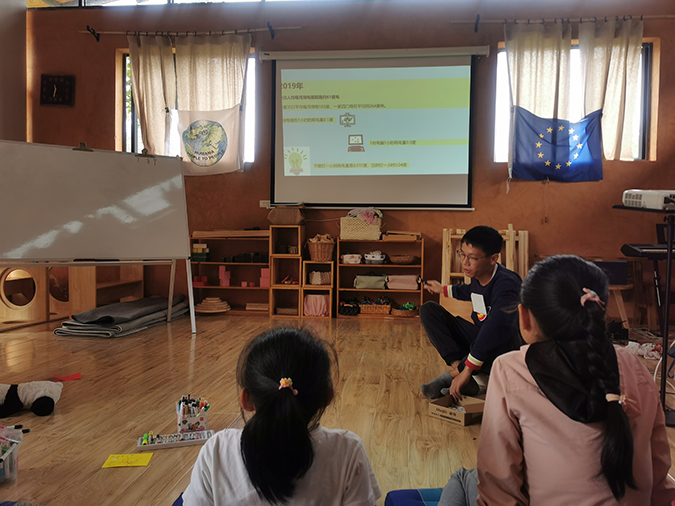

After leaving the preschool, we went deeper and deeper in the village. We also needed to learn to make "biochar" and "ecological paver" here.
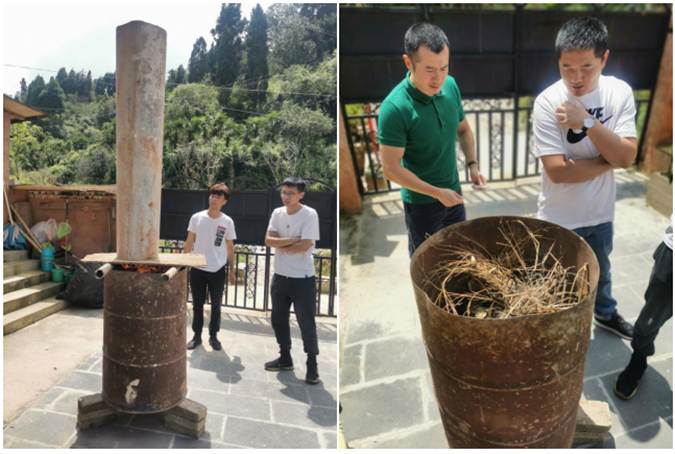
"Biochar" and "ecological paver", both of which are low-cost and use discharged products, can protect our environment effectively. Made by burned straw, "biochar" is a bio-organic material,which is especially suitable for improving the soil, adjusting the pH of soil and boosting the yield of crops. "Ecological paver" is made from domestic waste that is difficult to decompose in daily life, and can be used to build exterior walls and flower beds.
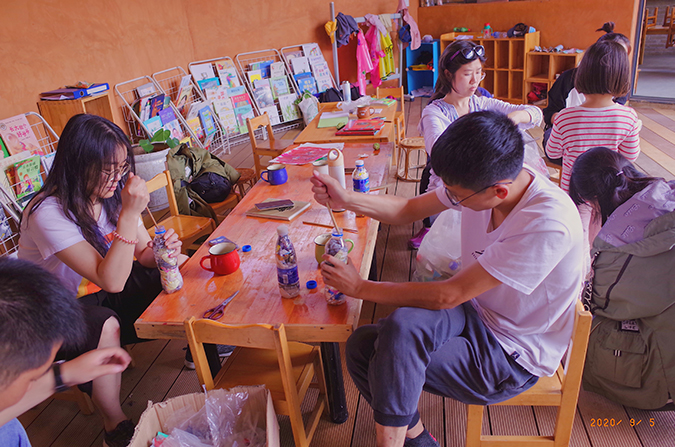
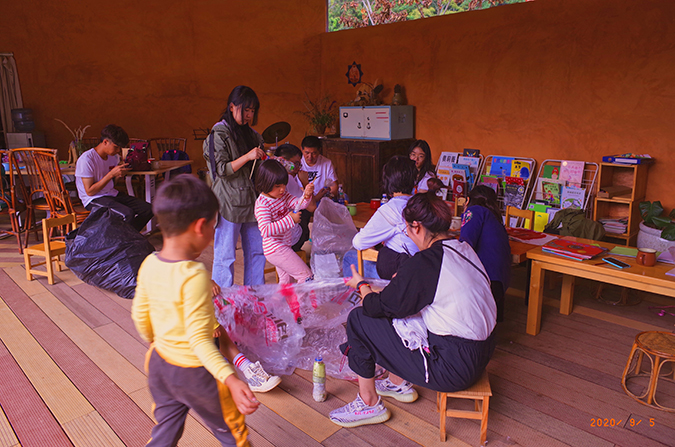
When it comes to low-carbon and ecology, the nature on which we live is the closest thing. The forest provides us with not only sufficient water and oxygen, but also suitable living environment, serving as an important barrier for the long-term survival of human beings.
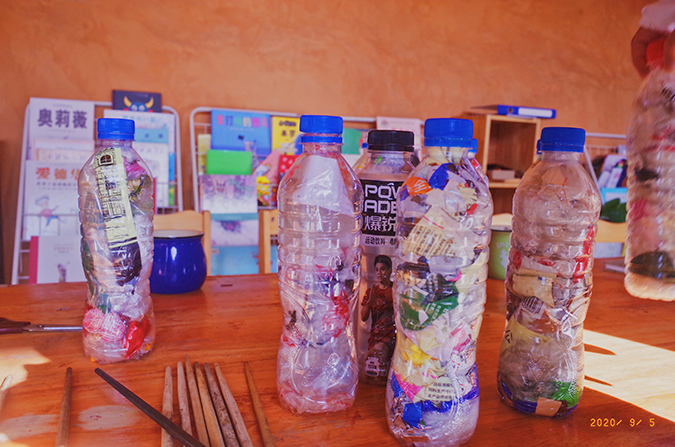
At the end of the day, we had the honor to visit and study in Gooday Food Forest. The dense aroma permeates the lush fruit forest. Referring to the nature's recycling principle, the “Permaculture” ecological agriculture system--mixed planting of fruit trees, excavating water storage ditches in uphill contour lines, garbage sorting, earthworm towers, and homemade household articles, are showing that ecology and sustainability can be seen everywhere.

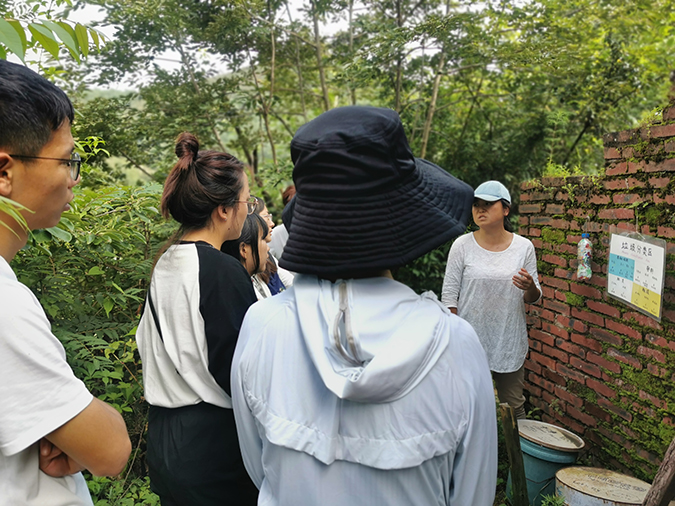
Through sharing and exchanging, we learned that Ms. Yang, who runs the Gooday Food Forest, is always practicing sustainability in her simple daily life.

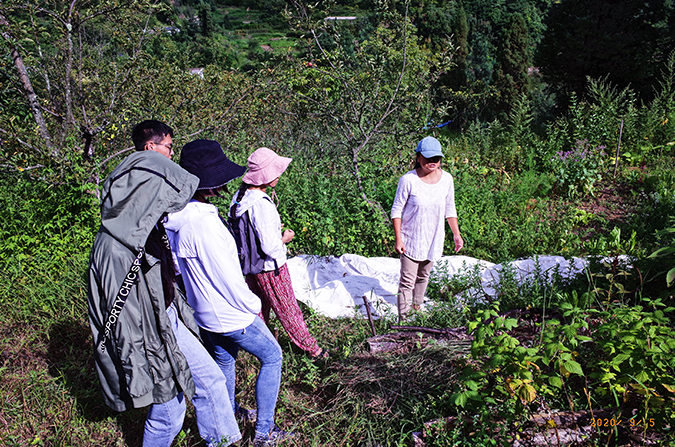
One day in Damoyu Village, we explored the "carbon footprint" of local life along the winding path.
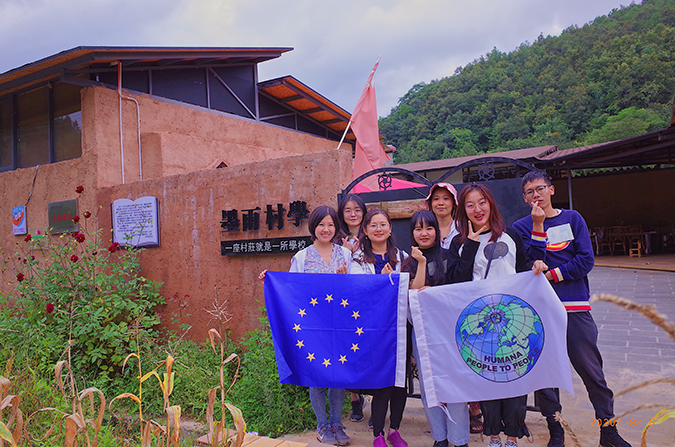
A village is a school, with delicious vegetarian food enchanting the taste buds, the children's innocence and curiosity about the world, as well as the ecological agriculture of the fruity Gooday Food Forest. Many people yearn for the life, which is actually a simple and low-carbon life.
Project introduction:
Yunnan Low-carbon Schools Pilot Project is funded by the European Union and implemented by the People to People Foundation (Spanish member of HPP) in cooperation with FAIHPP (Switzerland) Yunnan Representative Office, Yunnan Academy for Science and Technical Information, Southwest Forestry University and Chinese Youth Climate Action Network, with a project cycle from January 1, 2020 to December 31, 2023. The project begins by increasing partners’ awareness and advocacy on climate change mitigation and environmental protection, by raising climate change awareness among 600 schools, 70,000 students and teachers, determine the emission benchmark through basic calculation, and then implement emission reduction work. Use science, technology, innovation and other means to respond to “climate action” to accelerate environmental sustainability and promote the transition from green campuses to low-carbon and carbon-neutral campuses.

Project funded by the European Union.

This project is supported by the European Union and the People to People Foundation (Spanish member of HPP).
The article only represents the author’s personal views, and is not related to the funder.